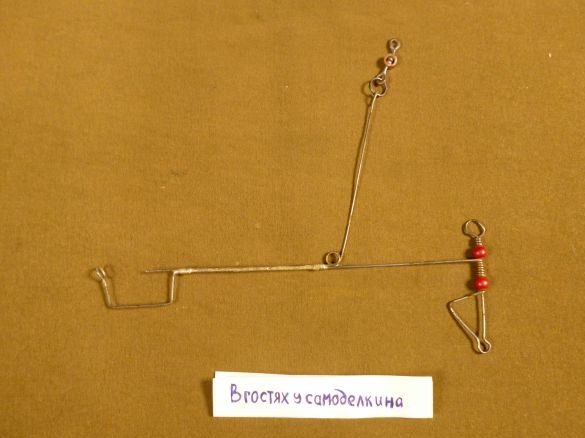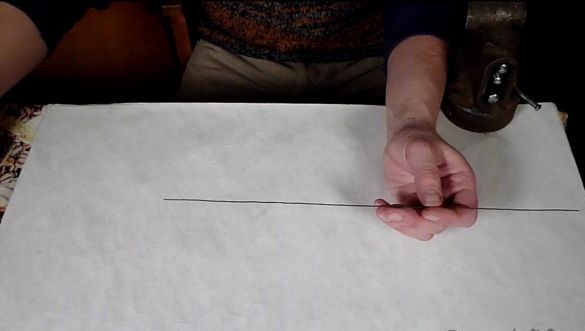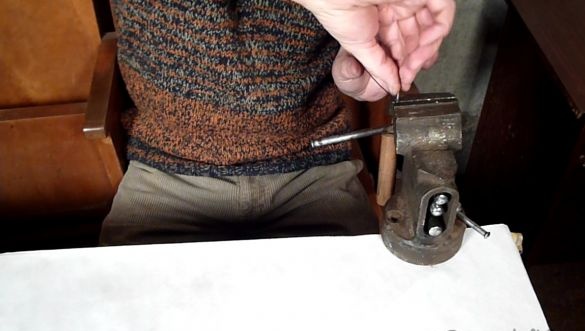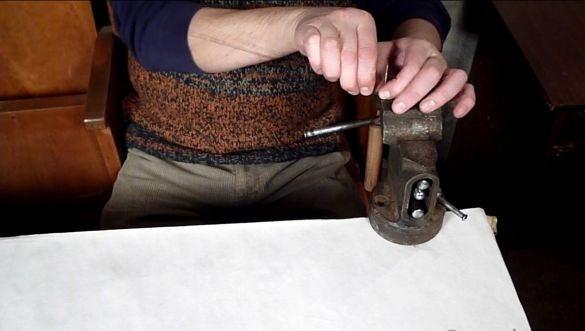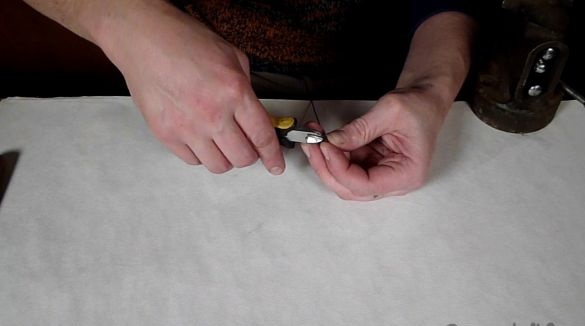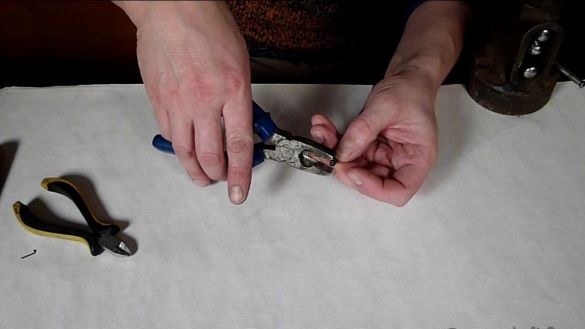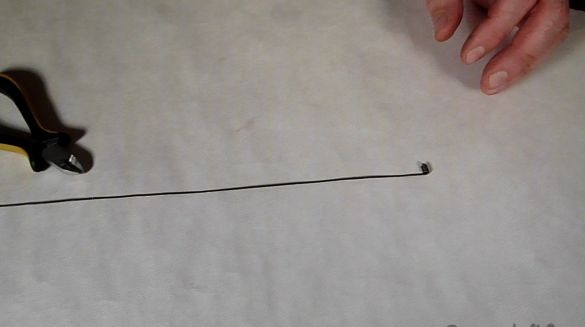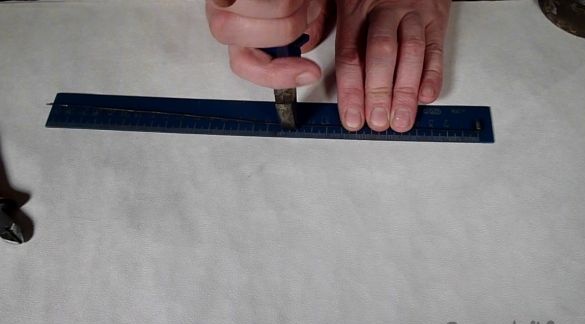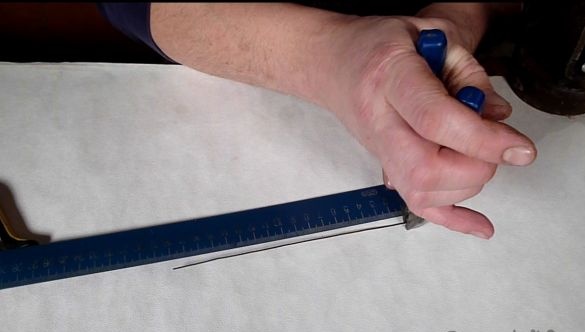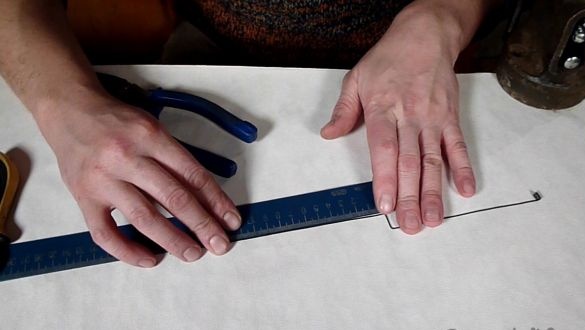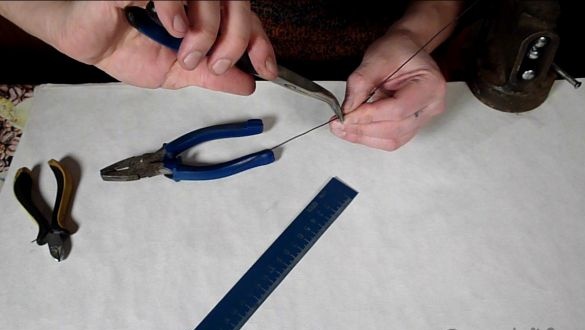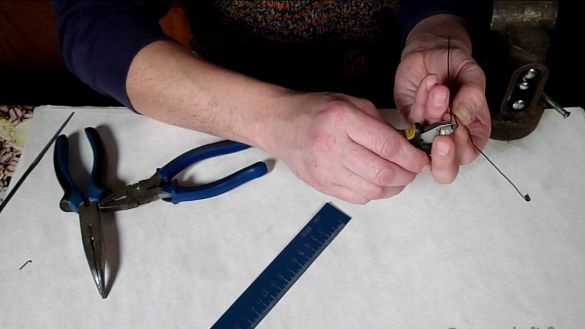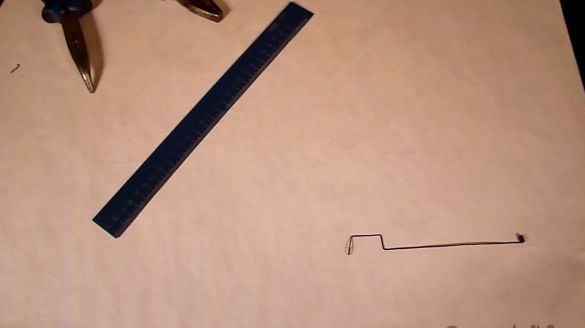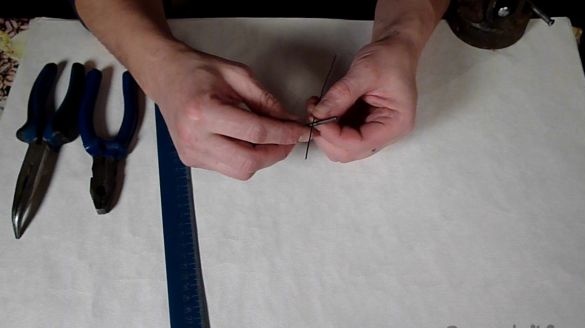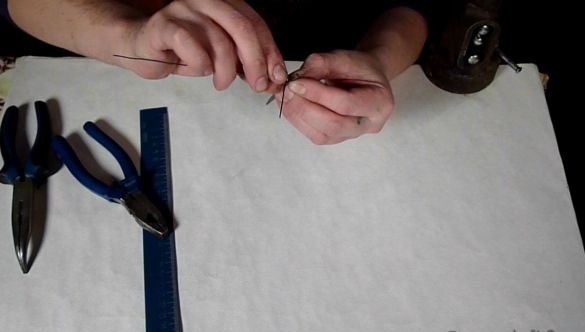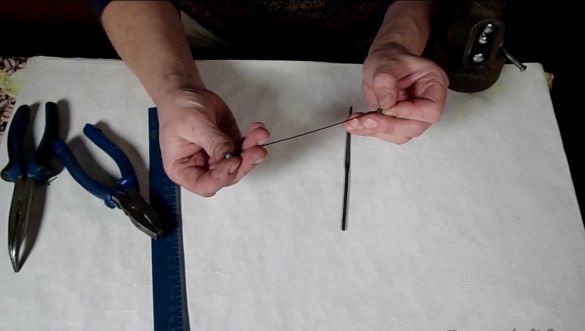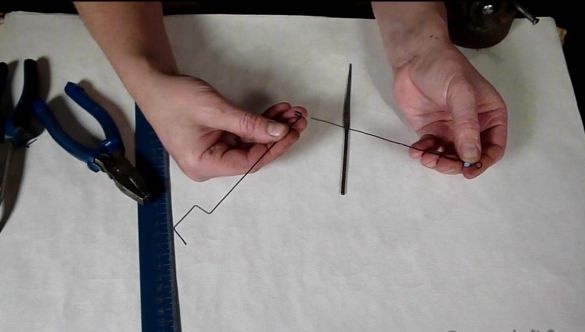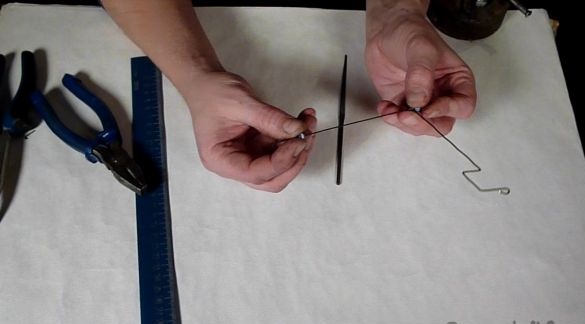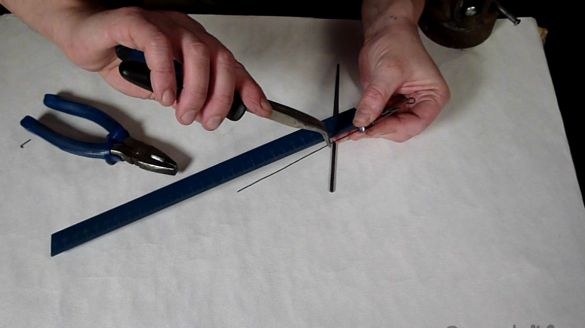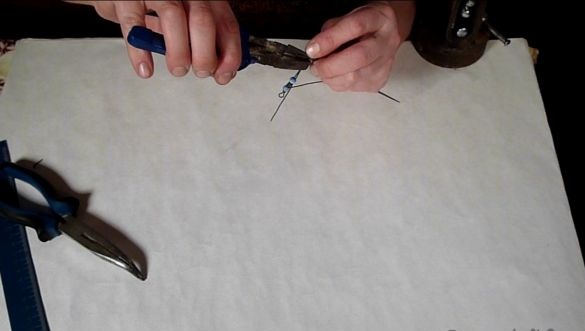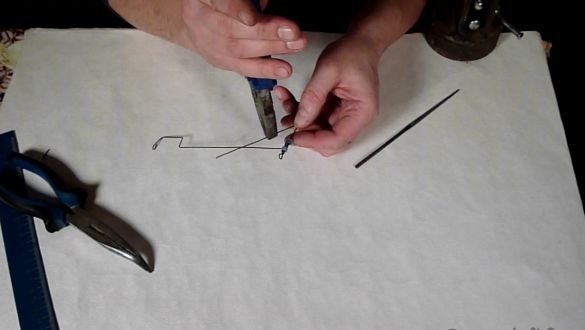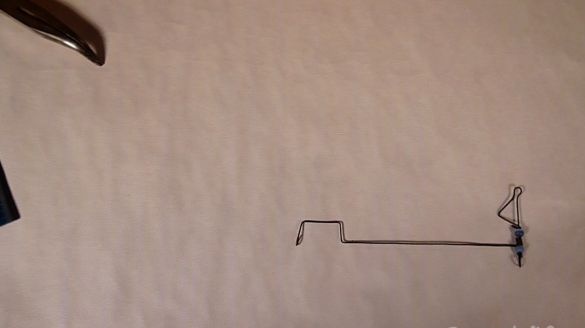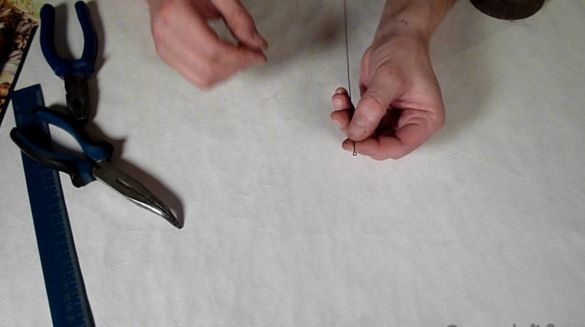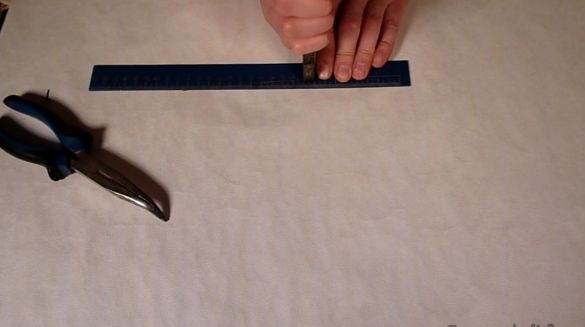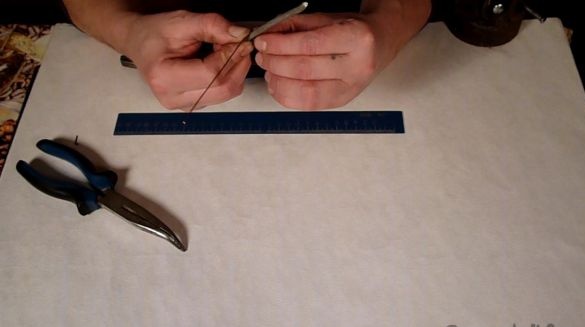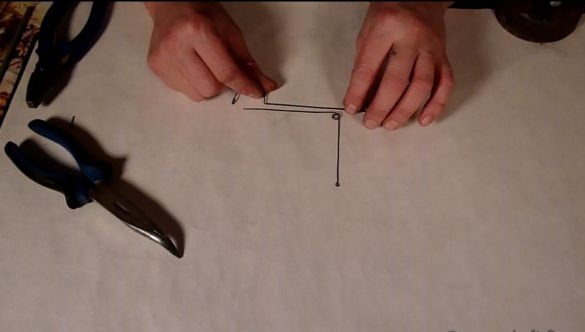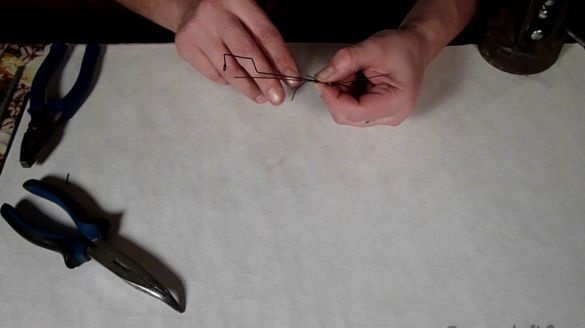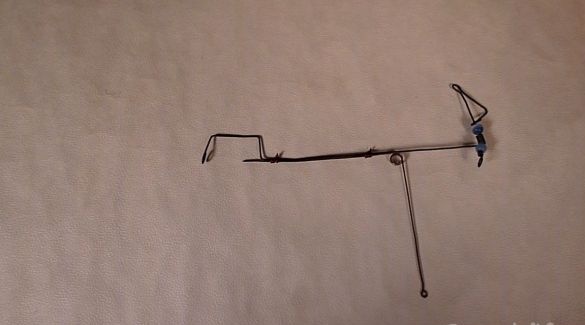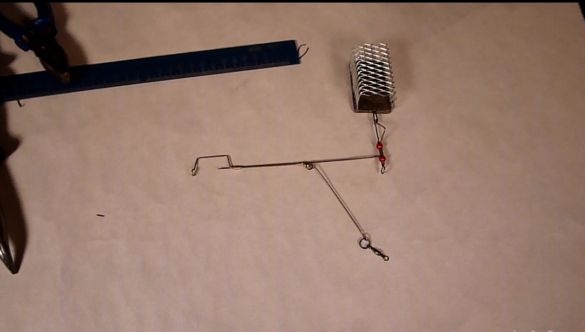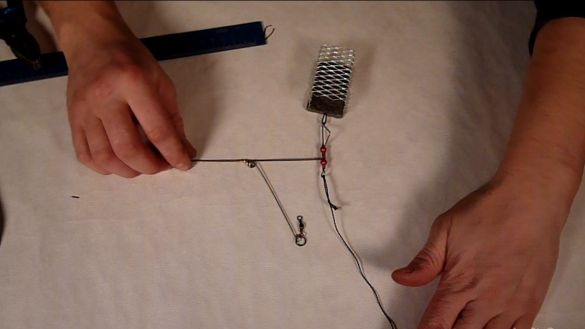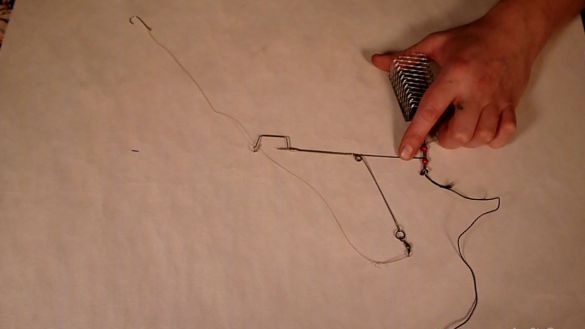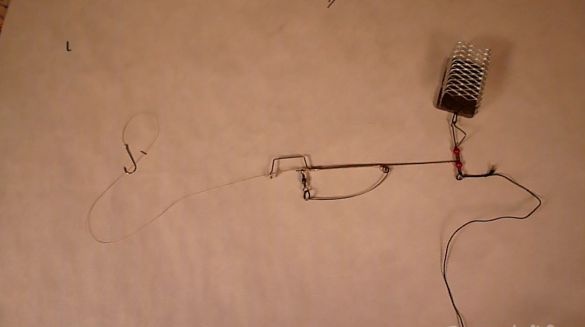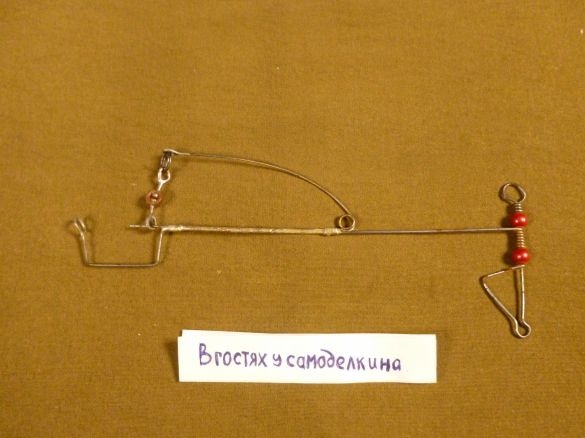We will make an automatic podsekakat for a separate leash of bottom tackle. This design has both advantages and disadvantages. The advantages include low weight and size, the disadvantages are an increased chance of a hook. I must say right away that this self-locator has been tried personally and repeatedly. After several seasons of fishing, it was concluded that the virtues still outweigh the disadvantages.
Tools needed and fixtures.
1. Vise.
2. Pliers.
3. Nippers.
4. Soldering iron.
5. Awl or nail.
6. Tin.
7. Soldering acid.
Materials required.
1. Steel wire with a diameter of 0.8 - 0.9 mm.
2. Thin copper wire.
3. Two plastic beads.
We take a length of steel wire of 30 cm. Such a wire, for example, can be taken from a cable. In thick, steel cables, wire of three different diameters, you can choose the right one.
Now we clamp the edge of the wire and the awl in a vice. Instead of an awl, you can use, for example, a nail, the main thing is that its diameter coincides with the diameter of the wire. We make 5 - 7 turns of wire around the awl.
We trim and bite off the excess with nippers.
It should be such a blank.
We measure from the edge with a winding of 12 cm and bend the wire down, parallel to the turns.
We measure one centimeter and bend parallel to the main wire.
Now measure out 2.5 cm and bend up.
We measure 1, 5 cm, and form a ring, entwining a wire, for example, on a shank of a file or round pliers.
We bite off too much.
In the end, you should get such a detail.
For the next part, we need a 15 cm wire length. We retreat from the edge of 5 cm and form a ring on the nail, wrapping a short length of wire around a long 3-4 turns. We naturally get rid of the excess.
Putting the parts together. On the second part we string a bead.
We pass the second part into the turns of the first.
String the second bead. Beads, in some way, play the role of bearings.
We retreat 3 cm and bend the bottom of the wire, forming a fastener.
The result is such a detail.
To make a spring, we take a length of wire of 20 cm. At one end we bend the ring.
We retreat from the 8 cm ring and form the actual spring in 2-3 turns.
Using a thin copper wire, twist the parts together, leaving 1 cm for a hook.
The chopper is ready. We trim all corners and bends with pliers, bite the protruding tails of the wire. For reliability, we fix the places of fixation with a copper wire and rings.
On a homemade clasp, we hook the feeder.
On the upper ring we tie the main fishing line or cord.
The leash is threaded into the ring at the end of the undercutter and tied to the swivel on the spring ring.
We cock the undercutter by hooking the swivel ring over the protrusion.
As the saying goes, the worm is hooked, donkey into the water. No tail, no scales!
You can watch a video on making a self-guiding device here.


